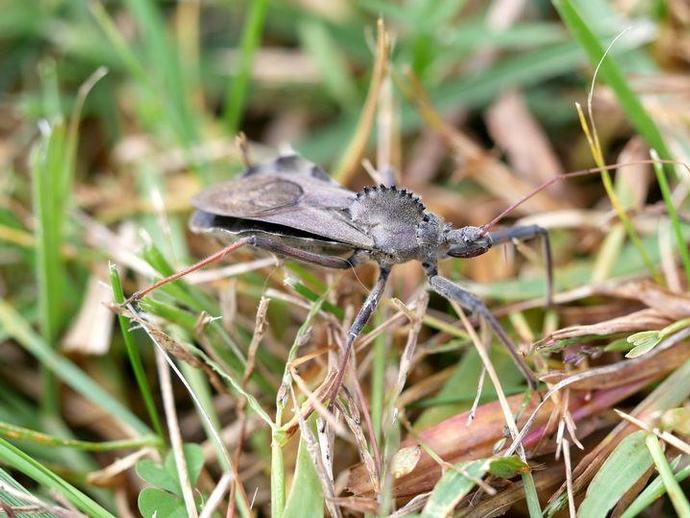January 22, 2022
We're reaching into the archives for today's #BenInNature update presented by our friends at Carter Bank & Trust! The following post was originally published on November 2, 2020.
Over the last couple of months, I've gotten multiple identification requests from regular #BenInNature readers asking about this unusual-looking insect. Let's kick off the week by looking at the wheel bug (Arilus cristatus), an impressive little predator that should be treated with respect!
Wheel bugs belong to the assassin bug family Reduviidae and they're one of the biggest true bugs (members of the order Hemiptera) in North America, growing up to an inch and a half long! The adults are easily identifiable because of the large "wheel" on their pronotum that sort of resembles a gear (or a mohawk, as I always thought when I was a kid). These insects tend to hide themselves in leaves while they hunt their prey, but once they've found a prey insect, they spring into action.
When an unfortunate insect comes within striking distance of a wheel bug, the wheel bug will grab the insect with its front legs and stab its beak into the insect, then inject it with digestive enzymes that both paralyze the prey and dissolve its insides. It then uses its beak like a straw and I guess you can imagine the rest.
If you spot a wheel bug, you definitely shouldn't handle it, because these insects will use their beaks in self defense. While the bite isn't medically significant, it is reportedly very painful, worse than a wasp or hornet sting.
Having learned all this, you're probably about to conclude that you're not a fan of the wheel bug. Believe it or not, I'm about to change your mind! Wheel bugs mostly prey on pest insects you find in your garden, so they're a great boon to any gardeners out there. But the wheel bug offers another wonderful benefit to humankind: these guys are one of very few predators that kill and eat brown marmorated stink bugs (Halyomorpha halys)! For that reason alone, I feel the wheel bug deserves a ticker-tape parade.
ABOUT #BenInNature
Social distancing can be difficult, but it presents a great opportunity to become reacquainted with nature. In this series of posts, Administrator of Science Ben Williams ventures outdoors to record a snapshot of the unique sights that can be found in the natural world. New updates are posted Monday - Friday, with previous posts highlighted on the weekends. This series of posts is made possible thanks to the support of VMNH Corporate Partner Carter Bank & Trust (www.cbtcares.com).
NATURE PHOTO IDENTIFICATIONS
If you discover something in nature that you would like help identifying, be sure to message us right here on Facebook with a picture (please include location and date of picture) and we'll have our experts help you identify it!

 Hours & Admissions
Hours & Admissions Directions
Directions

